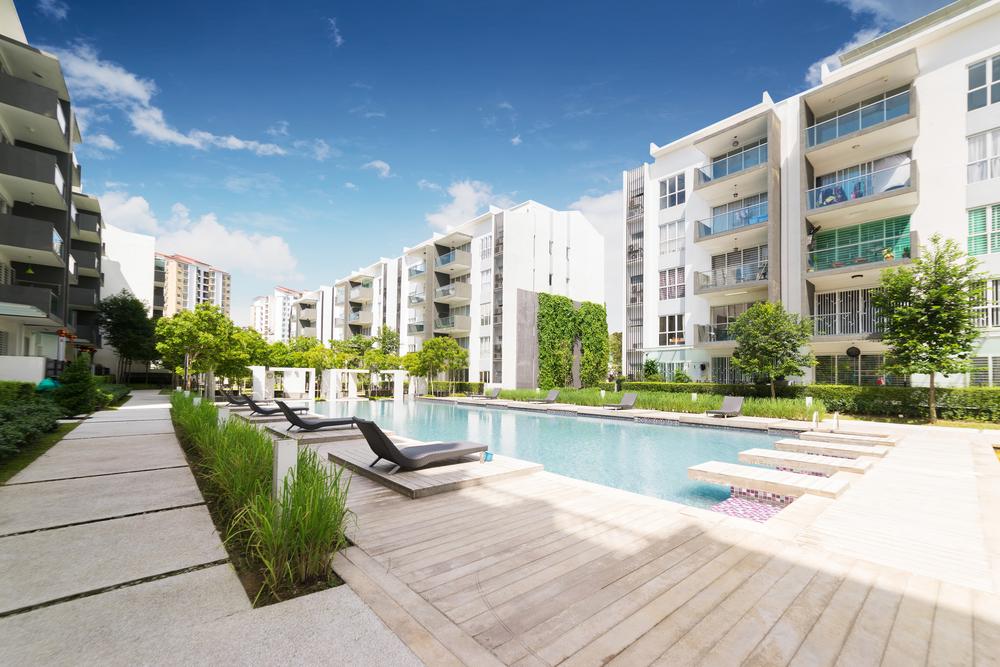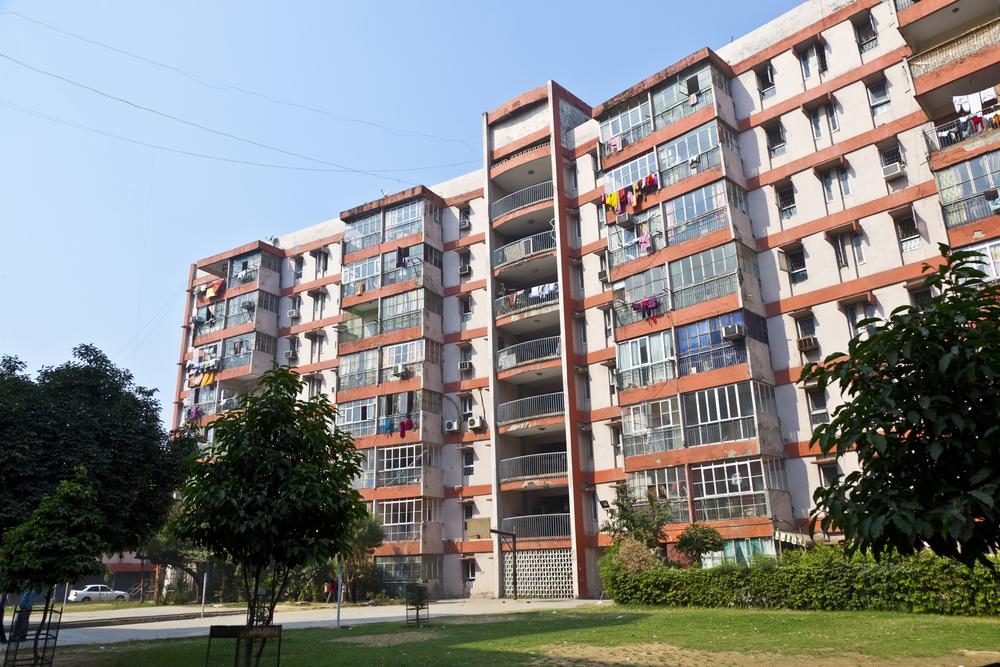
Introduction:
In the ever-evolving landscape of Singapore’s real estate, the private non-landed housing sector has recently witnessed a notable shift. According to the latest flash estimate from the National University of Singapore’s Singapore Residential Price Index (NUS SRPI), there has been a 0.7% month-on-month increase in prices for September. This article delves deep into the implications and underlying factors of this development, offering a comprehensive overview for potential investors, homeowners, and market analysts.
Bagnall Haus launch price spans an impressive 21,866.7 square meters, presenting a sizable canvas for creating a community-centric living space.
Understanding the 0.7% Price Increase in September
The Significance of the Rise
Why is a 0.7% increase in private non-landed housing prices significant? This modest uptick reflects the resilience and continued demand in Singapore’s property market, despite global economic uncertainties. It’s a testament to the robustness of the local real estate sector and its appeal to investors.
Factors Contributing to the Price Hike
Several elements have contributed to this price increase. From the limited supply of new private homes to the steady demand from both local and foreign buyers, the market dynamics are complex. Additionally, the low-interest-rate environment has played a crucial role in bolstering property investments.
Comparative Analysis with Previous Months
How does this 0.7% rise compare with previous months? A month-by-month comparison reveals a steady growth pattern in the private non-landed housing sector, highlighting a consistent upward trend in the market.
Breaking Down the NUS SRPI Flash Estimate
What is the NUS SRPI?
The National University of Singapore’s Singapore Residential Price Index (NUS SRPI) is a critical tool for understanding property price movements in Singapore. It offers a comprehensive view of the market trends, aiding investors and buyers in making informed decisions.
Methodology Behind the Flash Estimate
The NUS SRPI’s flash estimate is based on a sophisticated methodology that includes data collection from various reliable sources, ensuring accuracy and relevance in its findings.
Implications of the Latest SRPI Data
What does the latest SRPI data imply for the market? This increase indicates a growing confidence among investors and end-users in the private non-landed housing sector, suggesting a positive outlook for the future.
The Impact on Home Buyers and Investors
What This Means for Potential Home Buyers
For potential home buyers, this price increase is a double-edged sword. It represents the health of the property market but also indicates rising costs of acquiring private non-landed homes.
Investor Sentiment in Light of the Price Rise
How are investors reacting to this change? Generally, the investor sentiment remains positive, with many seeing this as an opportunity for long-term capital appreciation.
Long-Term Outlook for the Private Non-Landed Housing Market
The long-term outlook remains optimistic. With Singapore’s stable economy and strong governance, the private non-landed housing market is expected to continue its upward trajectory, albeit at a sustainable pace.
Analyzing Market Dynamics
Supply vs. Demand: The Balancing Act
The interplay between supply and demand is a critical factor in understanding the price movements. Currently, the market is experiencing a tight balance, with demand slightly outpacing the supply.
The Role of Government Policies
Government policies, including cooling measures and development plans, significantly impact the private non-landed housing market. These policies aim to ensure a stable and sustainable property market in Singapore.
Global Economic Factors at Play
Global economic trends, such as trade tensions and the pandemic’s impact, also influence Singapore’s property market. However, the market’s resilience is evident in its ability to withstand such external pressures.
Regional Price Trends and Analysis
Variations Across Different Regions
Price trends vary across different regions in Singapore. While some areas have seen higher price increases, others have remained more stable. This section explores these regional differences in detail.
Emerging Hotspots in the Private Non-Landed Sector
Certain regions are emerging as hotspots in the private non-landed sector, attracting both investors and homebuyers. These areas are characterized by their strategic location, amenities, and future development potential.
Predictions for Future Regional Trends
What are the predictions for future regional trends? Analysts anticipate that areas with upcoming infrastructure developments and connectivity improvements will likely see increased demand and price growth.
In-Depth Look at Buyer Demographics
Who is Buying? Understanding the Buyer Profile
Understanding the buyer demographic is crucial in analyzing market trends. This section delves into the profiles of typical buyers in the private non-landed housing market, including their age, occupation, and purchasing motivations.
The Influence of Foreign Buyers
Foreign buyers play a significant role in Singapore’s property market. This segment examines their impact on the private non-landed housing sector and the factors driving their interest in Singaporean real estate.
Changing Trends in Buyer Preferences
Buyer preferences are constantly evolving. This part of the article explores the current trends in what buyers are looking for in private non-landed homes, from sustainability features to smart home technologies.
Financial Aspects and Investment Opportunities
Analyzing the Investment Potential
Is investing in private non-landed housing still a good idea? This section provides an in-depth analysis of the investment potential, considering factors like rental yields, capital appreciation, and market stability.
Loan and Financing Options for Buyers
Understanding loan and financing options is crucial for buyers. This segment offers insights into the various financing avenues available, including bank loans and government schemes.
Risk Assessment and Management
Investing in real estate comes with its risks. This part of the article discusses risk assessment and management strategies for investors in the private non-landed housing market.
The Future of Singapore’s Private Non-Landed Housing Market
Predictions and Trends to Watch
What does the future hold for Singapore’s private non-landed housing market? This concluding section offers predictions and identifies key trends that could shape the market in the coming years.
The Role of Technology and Innovation
Technology and innovation are increasingly influencing the real estate sector. From virtual property viewings to blockchain in property transactions, this segment explores how technology is shaping the future of the housing market.
Sustainability and Green Living Trends
Sustainability and green living are becoming more important in real estate. This part looks at how these trends are influencing buyer preferences and the development of new properties.
FAQs
- What caused the 0.7% increase in private non-landed housing prices in September? The increase is attributed to factors like limited supply, steady demand, and a low-interest-rate environment.
- Is now a good time to invest in Singapore’s private non-landed housing market? Yes, the market shows signs of steady growth and long-term potential, making it a viable investment option.
- How do government policies affect the private non-landed housing market? Government policies play a crucial role in maintaining market stability and sustainability through measures like cooling policies and development plans.
- What are the emerging hotspots in the private non-landed housing sector? Areas with strategic locations, amenities, and upcoming infrastructure developments are emerging as hotspots.
- What should buyers consider when looking at financing options? Buyers should consider factors like interest rates, loan tenure, and their financial stability when exploring financing options.
- How is technology influencing the private non-landed housing market? Technology is revolutionizing the market through innovations like virtual viewings, smart home features, and blockchain in transactions.
Conclusion: Navigating the Evolving Landscape of Singapore’s Private Non-Landed Housing Market As we’ve explored, the private non-landed housing market in Singapore is a dynamic and evolving sector, characterized by its resilience and potential for growth. The 0.7% price increase in September, as reported by the NUS SRPI, is a clear indicator of the market’s robustness. For investors, homeowners, and market watchers, understanding these trends and factors is key to navigating this landscape successfully. With careful analysis and informed decision-making, stakeholders can capitalize on the opportunities presented in this vibrant market.









